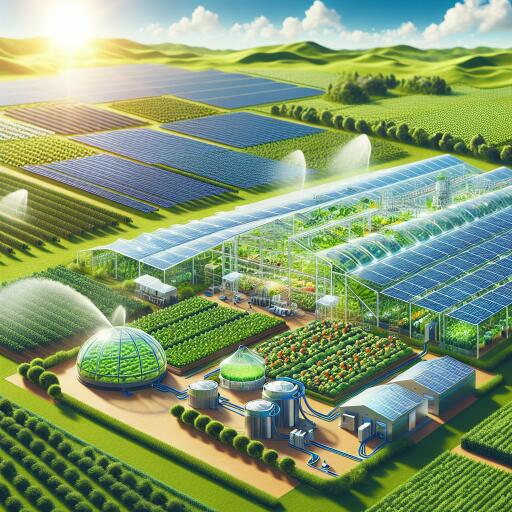
Can Solar Energy Transform Farms for Sustainable Agriculture and Environmental Conservation?
As nations like India ambitiously pursue renewable energy goals, such as creating 500 GW of renewable energy generation capacity by 2030, solar power emerges as a pivotal contributor. Given its land requirement of 3.5 acres per megawatt (MW), solar power often finds itself in direct competition with agriculture for land resources. Yet, innovative strategies are transforming this potential conflict into a cooperative endeavor that aligns renewable energy development with agricultural enhancement, aiming not just for energy targets, but also for improved farm incomes.
The dynamics between energy consumption and agriculture in India are intricate. Agriculture has often faced criticism for its high energy consumption, yet it incurs minimal costs for such usage. This dynamic has led to inefficient energy consumption, providing little motivation for conservation or efficiency. Conversely, struggles with low farm incomes have resulted in agricultural lands being repurposed for different uses, including renewable energy generation.
Agrivoltaics: A Promising Integration
Integrating solar energy with farming is being implemented under the PM-KUSUM scheme in India, offering incentives for:
- Establishing solar projects near existing substations on either barren or cultivable land with elevated solar panels (Agrivoltaics), allowing crops to grow underneath.
- Installing standalone solar agricultural pumps.
- Solarization of grid-connected pumps.
Solar agricultural pumps significantly address the energy consumption challenges, and their increased adoption is reducing agriculture’s reliance on grid power. Agrivoltaics—situating solar panels above crops—represents a groundbreaking path that could revolutionize farming while contributing to India’s renewable energy capacity. Early applications of this technology have yielded higher crop outputs alongside increased solar power generation due to the panels’ elevated installation.
Agrivoltaics has evolved from experimental stages to having a meaningful installation base globally, achieving 2.8 GW in 2020, with countries like China, Japan, and Germany leading the way.
Boosting Farm Income
This technology is poised for rapid deployment in arid and semi-arid zones, but its benefits suggest it could be extended beyond these areas. Farm income levels are often a politically sensitive topic. In India, rental income for solar farm land ranges from ₹20,000 to ₹40,000 per acre. In contrast, farm incomes per acre vary significantly across states, from about ₹25,000 to ₹400,000. By integrating solar technology, farms could significantly bolster their income, making strides toward the target of doubling farm incomes.
India boasts 139 million hectares of cultivated land, according to the Ministry of Agriculture’s 2022-2023 annual report. Even a modest fraction of this land dedicated to agrivoltaics could create notable advancements in the country’s renewable energy capabilities.
An optimal model is needed to harness this potential. Although PM-KUSUM has emphasized the role of farmers or cooperatives in setting up these projects, involving private investors could ease initial apprehensions farmers might have about adopting such solutions.
Bridging Tradition with Innovation
Sustainability has been integral to the Indian way of life for centuries, where the sun and agricultural produce are revered. By embracing both renewable energy and agriculture in unison, there is a unique opportunity to respect this heritage while simultaneously enhancing agricultural economics and aiding environmental conservation. It is a crucial time to leverage this ancient wisdom to pave the way for a sustainable and prosperous future.





Leave a Reply